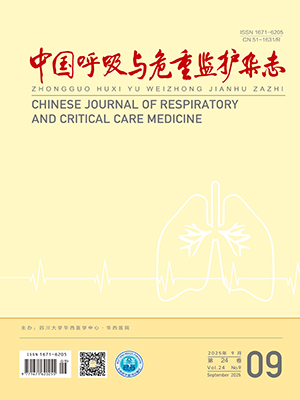Objective To explore the relationship between obstructive sleep apnea hypopnea syndrome ( OSAHS) and airway hyperresponsiveness ( AHR) . Methods 197 subjects suspected for OSAHS were enrolled in the study. They were all performed overnight polysomnogram ( PSG) monitoring and lung function test. Acoording to the results of FEV1% pred, they were performed bronchial provocation test( BPT)or brochial dilation test( BDT) . The relation between apnea hypopnea index ( AHI) and the degree of airway hyperresponsiveness ( AHR, expressed as PD20 -FEV1 ) was evaluated by linear correlation analysis. Results 117 patients were diagnosed as OSAHS, in which 28 cases were complicated with AHR( 3 cases with positive BDT result, 25 cases with AHR) . In 80 non-OSAHS patients, 7 cases were complicated with AHR. The
incidence of AHR was higher in the OSAHS patients compared with the non-OSAHS patients( 23. 9% vs 8. 8% , P lt; 0. 01 ) . AHI of OSAHS patients with AHR was higher than OSAHS patients without AHR[ ( 30. 3 ±5. 1) /h vs ( 23. 7 ±2. 4) /h, P lt;0. 01] . There was a positive correlation between AHI and degree of AHR in OSAHS patients with AHR( r=0. 62, P lt;0. 05, n=25) . Conclusion OSAHS is associated with an increased risk of AHR.
Citation: SHI Ping,XIONG Xiaomin,ZENG Jia,ZHAO Shicai,MA Bing,YANG Ping. Relationship Between Obstructive Sleep Apnea Hypopnea Syndrome and Airway Hyperresponsiveness. Chinese Journal of Respiratory and Critical Care Medicine, 2010, 9(3): 253-255. doi: Copy
Copyright © the editorial department of Chinese Journal of Respiratory and Critical Care Medicine of West China Medical Publisher. All rights reserved




